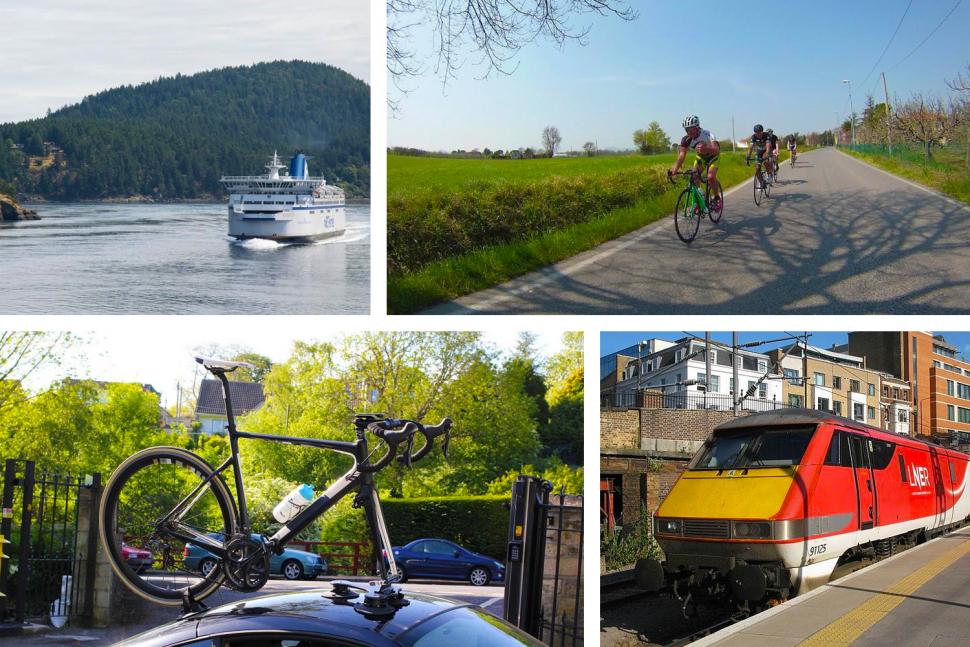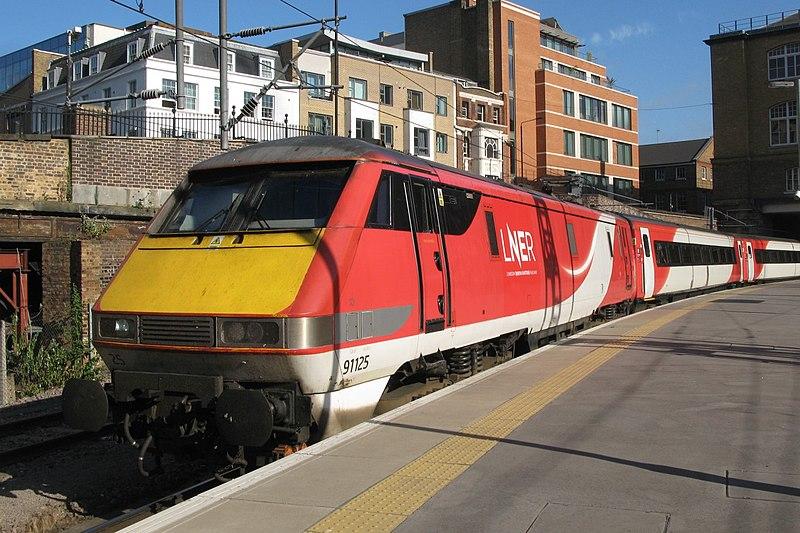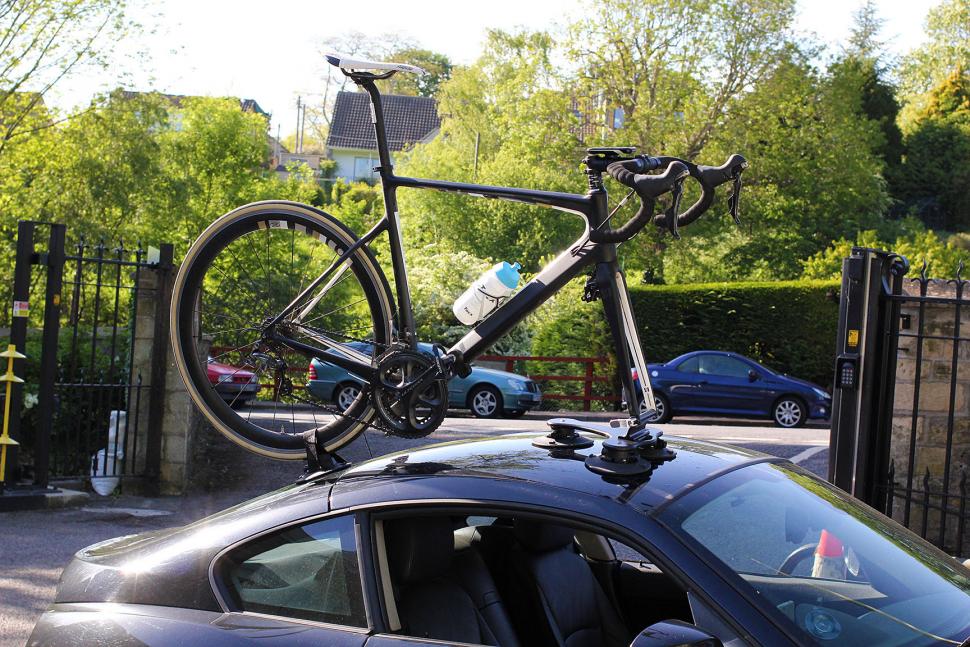- News
- Reviews
- Bikes
- Components
- Bar tape & grips
- Bottom brackets
- Brake & gear cables
- Brake & STI levers
- Brake pads & spares
- Brakes
- Cassettes & freewheels
- Chains
- Chainsets & chainrings
- Derailleurs - front
- Derailleurs - rear
- Forks
- Gear levers & shifters
- Groupsets
- Handlebars & extensions
- Headsets
- Hubs
- Inner tubes
- Pedals
- Quick releases & skewers
- Saddles
- Seatposts
- Stems
- Wheels
- Tyres
- Tubeless valves
- Accessories
- Accessories - misc
- Computer mounts
- Bags
- Bar ends
- Bike bags & cases
- Bottle cages
- Bottles
- Cameras
- Car racks
- Child seats
- Computers
- Glasses
- GPS units
- Helmets
- Lights - front
- Lights - rear
- Lights - sets
- Locks
- Mirrors
- Mudguards
- Racks
- Pumps & CO2 inflators
- Puncture kits
- Reflectives
- Smart watches
- Stands and racks
- Trailers
- Clothing
- Health, fitness and nutrition
- Tools and workshop
- Miscellaneous
- Buyers Guides
- Features
- Forum
- Recommends
- Podcast
 The no-fly guide to taking your bike on holiday - March 2020
The no-fly guide to taking your bike on holiday - March 2020The no-fly guide to taking your bike on holiday - cars, ferries, trains and touring options
So you want to go on a cycling holiday without taking your bike on the plane this summer? Flying with a bike is fraught with risk and there’s also the environmental concern, so we’ve come up with some alternative ways to go on a cycling holiday that won’t incur a guilt trip.
According to Friends of the Earth, flying is “one of the most climate-wrecking modes of transport” and it points to the solution being to choose others methods of transport, or simply to holiday closer to home. Below we have looked at the alternative options from getting the ferry to travelling by train, and also cycling touring.
If you do want to fly with your bike, here’s our no-hassle guide with top tips to save you money, and also stuff they never tell you about flying with your bike.
Get the train
If you’re determined to holiday abroad, it’s surprisingly easy to travel with by train. From London you can get the train to Belgium and France and from there you can travel to Spain, Italy and Germany and other European destinations. Most train services provide facilities for taking your bicycle, but you do need to plan ahead.
An early Eurostar from London gets you into France for lunch and from there you can hop on the TGV high-speed train and be in Bordeaux or Avignon by evening, ready for a weekend of lovely cycling.
The Eurostar allows you to take a folding bike aboard, book a space on the train, or use its registered luggage service on the day of departure. Use this luggage service and Eurostar can provide protective bike box from £30 which requires removing the wheels and turning the handlebar and it’ll travel on the same train.
If you’re travelling last-minute, Eurostar says it’ll send the bike, boxed or fully assembled, on the first available train so it might not be the same one as you. You can find more information here.
Here’s a map of the TGV network to give you some ideas.
There are two options for taking your bike aboard the TGV. You can either fold or disassemble your bike and bring it on board for free, or you can store in the dedicated area of the train. You can book a ticket with a bicycle here.
If you want even more information on travelling by train, Seat 61 is a very good resource that has even more detail than we’ve space to go into here.
Staying closer to home, you can be in the Lake District via train in just a couple of hours where some of the UK’s best cycling awaits you. Avanti West Coast will whisk you from several stations to Oxenholme in the Lake District and you can reserve a space for your bike.
Once there, you can either plan your routes or pay for a guided weekend. Saddle Skedaddle runs a guided cycling weekend that will show you the best roads, and include six of the major passes, and ensure you get the best food, for £355 pp which includes two nights hotel accommodation, vehicle support, breakfast and lunch and transfers to the train station.
Get the ferry
The glamour of travelling by water is another option, with ferry services from most big ports easily taking you to Holland, Belgium, France, Ireland and Spain.
You can book a ferry from the UK’s busiest port, Dover, from as little as £30 each way, which is certainly cheaper than most low-cost flights once you add all the extras and especially the massive surcharge for adding a bike to the flight.
Dover to Calais is the quickest ferry route from the UK to France, it takes about 1.5 hours and there are lots of sailings every day. It’s worth bearing in mind that the cost of crossings go up considerably during school holidays and bank holidays, so check the calendar before you book.
Taking your bike on the ferry can either be via car with your bike in the boot or on a rack, or you can cycle straight onto the ferry and leave the car at home or in the port car park.
How about this for another option? You could travel from Portsmouth to Santander in Spain, with a journey time of 23 hours, allowing you to relax on board and prepare yourself for a dream cycling holiday around northern Spain. This map shows a wide choice of routes to pick from not far from the city.
It’s also entirely possible to cycle straight onto the ferry, so you can leave your car at home or a car park at the ferry port, depending on how far you are from the port you want to use. That gives you the benefit of being able to cycle off the ferry (well they’ll make you walk down the ramp) and get straight into your cycling holiday.
A bicycle counts as a vehicle so needs to be booked in advance. The P&O Ferries website has a helpful guide for travelling with your bicycle which is worth a read.
Your bike will be stored safely on the ferry after you’ve boarded ahead of all the cars and trucks. Leaving a ferry port can be tricky as they’re largely designed, as I found out at Calais once, for cars and trucks, not bicycles. You don’t want to end up on the motorway!
Take the car
Got a car? Hopping in the car with your bike is probably the easiest alternative to flying. Advantages include you’re free to travel when you want, you can choose your route, and you don’t have to worry about packing your bike into a tiny box. Downsides are the hours sitting behind the steering wheel and you’ll likely arrive at your destination pretty tired.
The Eurotunnel whisks you from Dover to Calais in just 35 minutes and from there you have your pick of destinations, and it comes down to how long you want to spend driving. The French Alps can be reached in a very long day, Italy is a two-day drive, or there are closer destinations in France, Belgium and Holland that all offer prime cycling.
There’s no extra charge for taking your bike on the Eurotunnel. Just remember to select the option if you’re putting bikes on a roof rack.
Something you need to factor in when travelling on motorways in Europe is tolls. The fastest route from Calais to Bordeaux will rack up €81 of tolls, so you’re looking at €162 all in to add to the cost of your trip. That’s according to ViaMichelin website which also suggests fuel costs and alternative routes.
The toll roads though are very good quality with plenty of service stations and rest areas for comfort breaks and picnics.
You can avoid the tolls if you want, and here's a useful website that shows alternative routes, but it does point out that while you might save some money, your journey time will be longer. That’s fine if you want to take the scenic route, but if you just want to get to your destination, using the toll roads is the quickest option.
You might want to consider the cost of a hotel to break up the journey if you’re going to the south of France, the Alps or Italy. While you can do it in one go if you live in London and the South East, from most other parts of the UK you’ll have racked up a few hours already by the time you arrive in Calais.
This website has a list of hotels that are near to the fastest route from Calais to the south of France.
If you don't have a car you can always look at hiring a car. There are all the obvious car hire companies, but there are alternatives.
Turo lets people hire out their cars and it can be a lot cheaper than the conventional hire car companies, and there might be a car that is located close by to save you travelling to a hire car company.
Zipcar is another option that gives you the flexibility to book cars for round trip or one-way journeys. You could book a van and drive to a start destination with a few friends, and then ride home!
Stay at home and go cycle touring
Why travel when you could explore your local area? With the rise of bikepacking helping to make the idea of travelling with luggage (aka touring) popular once again, you can easily plan a cycling holiday from your front door.
Simply get a map and pick a destination, plan some overnight stops and make the distance as mammoth or enjoyable as you want. You’ll be surprised just how much distance you can cover when you’ve got the whole day spread out ahead of you.
- Here’s our guide to bikepacking to get you started
You don’t need to spend a fortune on specialist gear either. A backpack is all you need, but if you want to do it more comfortable, strapping bags to the bike will be nicer over long distances. If your frame will take it, a rear rack and panniers are the traditional way of carrying your essentials with loads of space for everything you might need.
If you frame won’t take a rack, you can choose from a wide range of packs that strap directly to a frame. You can comfortably spread everything you need between a frame and seat pack. How much stuff depends on whether you plan to be wholly self-sufficient and camp or bivvy, or credit card it with overnighters in B&B or hotels.
- Here’s a useful guide to carrying stuff on the bike
We don’t need to remind you either, but the UK has loads of spectacular places to visit, and it’s unlikely you’ve discovered every corner of the country. From the Isle of Wight to Kielder Forest, the Scottish Glens to Snowdonia, there are many beautiful places to discover by bike that is right on your doorstep. Okay some a bit further away, but the point is you cycling holiday doesn’t have to immediately mean a trip abroad.
The Guardian has a very good resource for Britain’s best bike rides.
Are you planning a cycling holiday this year without flying? We'd love to hear from you so do please share your stories down below.
David worked on the road.cc tech team from 2012-2020. Previously he was editor of Bikemagic.com and before that staff writer at RCUK. He's a seasoned cyclist of all disciplines, from road to mountain biking, touring to cyclo-cross, he only wishes he had time to ride them all. He's mildly competitive, though he'll never admit it, and is a frequent road racer but is too lazy to do really well. He currently resides in the Cotswolds, and you can now find him over on his own YouTube channel David Arthur - Just Ride Bikes.
Latest Comments
- mdavidford 9 min 59 sec ago
Presumably she also has an entirely well-founded grudge against Belgian sealants, which justifies her trying to drive in to Urška Žigart.
- mdavidford 17 min 33 sec ago
Not sure how that trailer can be legal under the current rules - does it have something that interacts with the chain/cassette to determine whether...
- HLaB 20 min 10 sec ago
I think I'll stick to using old bibs that are a bit too worn to where outside 😂
- chrisonabike 30 min 21 sec ago
Of course ... but the current logic seems to favour "I have bought it so therefore it is my right to use it. If I'm not supposed to it shouldn't...
- BikingBud 1 hour 4 min ago
Paddington Harrow Road crash leaves two seriously injured...
- TheBillder 4 hours 29 min ago
I've had (past tense is deliberate) 3 of these over the past 5 years. I'm back here researching for a replacement as my last one broke last week. I...
- chrisonabike 6 hours 31 min ago
And the next time - plead sympathy for your addiction, caused by trauma from your previous "accident"...
- wtjs 6 hours 34 min ago
Butyric Acid... was the most disgusting thing I have ever smelt in the lab...
- ubercurmudgeon 7 hours 5 min ago
Even a stopped clock, etc, etc...




Add new comment
4 comments
A bike is generally very useful for ferries (without a car) as not all ports have public transport nearby. I travel Newcastle-Amsterdam a lot, and in Newcastle the nearest Metro station is about1.5km (which is walkable), but in Amsterdam (Ijmuiden) the nearest train stop is 7km away, so it is immensely useful to have a bike. Although there is a shuttle bus (between port and Newcastle/Amsterdam main station), I found them really inconvenient, as they only leave at one or two times, so if you arrive early, you wait forever for the bus. By bike you can just get on the ferry as soon as you arrive, even three hours before departure.
You can take a Brompton as hand luggage into the cabin, but I actually found it more convenient to book it as bicycle (it's only 5 Euro or so) because then you can cycle on board (rather than having to carry it along endless corridors) and leave the luggage on the bike (take a small bag only with necessary things for the night).
There is another way. I specialise in taking group's bikes down by road to plenty of nice places to ride, such as the Alps, Pyrenees, Mt Ventoux, Italy, Girona, Flandrrs, etc. etc. I take about 180 people each year from the UK like this. Have a look at https://www.lavieenvelo.com/cycle_france/file/getting_there.php
"If you’re determined to holiday abroad, it’s surprisingly easy to travel with by train."
I'm wondering if David has taken his bike on British trains much.
Given that the article includes UK destinations, Caledonian MacBrayne and Northlink would be worth a look too when considering ferries. No extra cost and no need to book your bike on Calmac - just turn up and go using a passenger fare. (Same applies to other operators on their more limited selection of routes, eg Western Ferries, Argyll & Bute Council etc etc). Ideal for touring/bikepacking holidays or for day trips.
Note that bike reservations are needed on longer distance Scotrail services, including the West Highland Line, Highland Main Line, Kyle and Far North Lines.